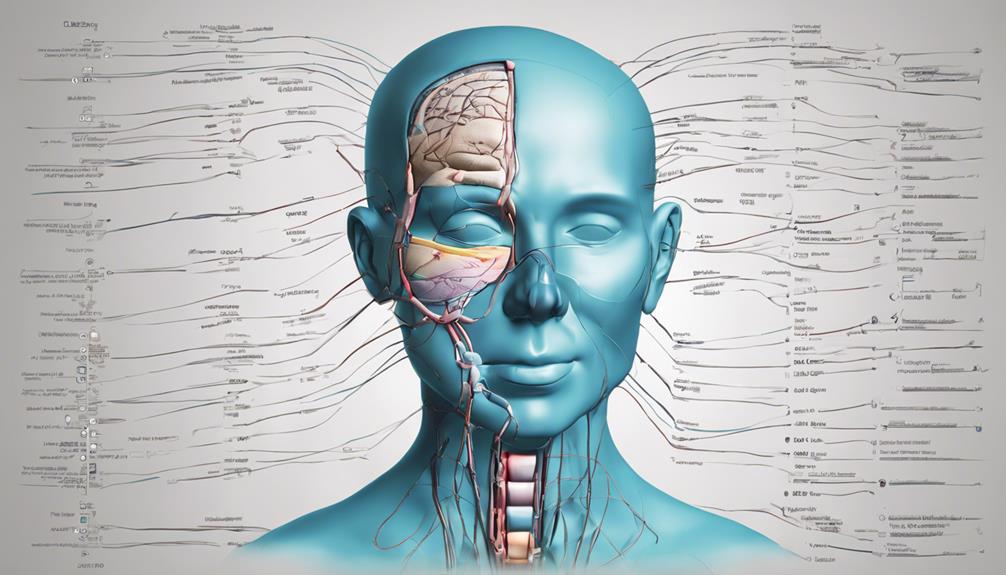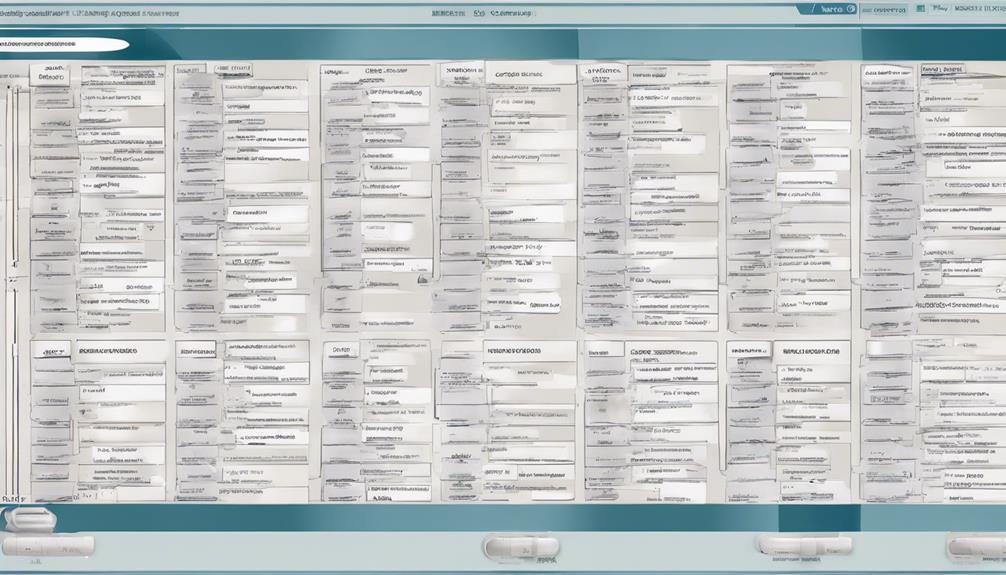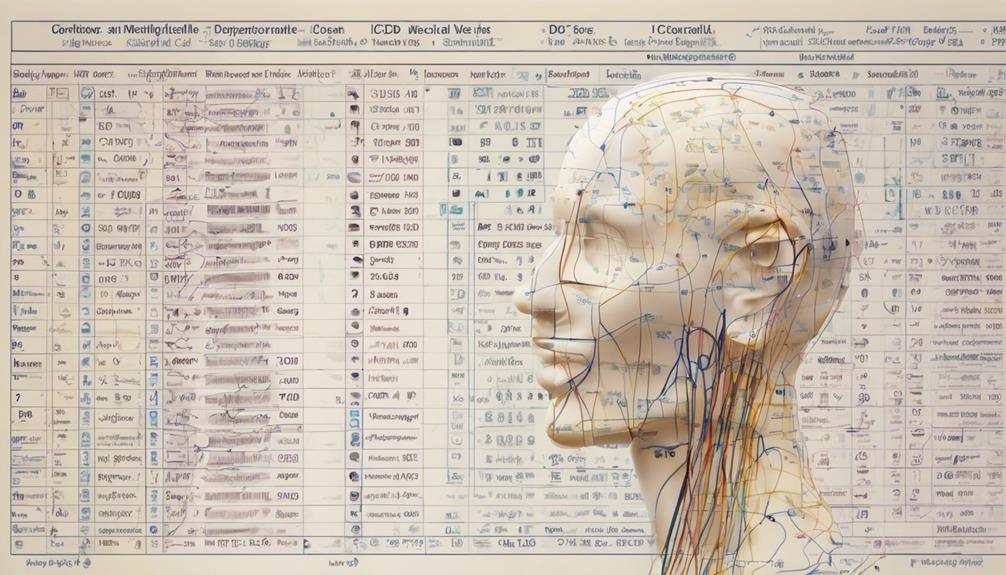When dealing with coding for sensorineural hearing loss in ICD-10, we are entering a challenging realm that demands our attention. Understanding the nuances of categorization and accurately using the appropriate codes is just the first step.
But what lies beneath this surface is a series of guidelines and considerations that can significantly impact our coding accuracy and, ultimately, patient care.
Curious to explore how these elements intertwine to shape our coding practices and enhance healthcare outcomes?
Key Takeaways
- Proper coding ensures accurate diagnosis and treatment planning.
- Understanding coding guidelines prevents errors and promotes clarity.
- Documentation tips aid in precise coding for sensorineural hearing loss.
- Accurate coding enhances patient care, communication, and outcomes.
Overview of Sensorineural Hearing Loss Coding
When coding sensorineural hearing loss in ICD-10, it's crucial to understand the categorization under H90.3 for bilateral involvement. Sensorineural hearing loss affecting both ears is coded using the H90.3 designation.
Proper documentation of the cause and severity of the condition is paramount for accurate coding. It's necessary to differentiate between unilateral and bilateral sensorineural hearing loss when assigning the correct ICD-10 code.
Understanding the coding nuances associated with sensorineural hearing loss aids in improving diagnosis accuracy and enables effective treatment planning. By ensuring thorough cause and severity documentation, healthcare professionals can accurately capture the nature of the hearing loss, leading to better management strategies.
Proper coding not only facilitates streamlined healthcare processes but also enhances patient care by providing a clear picture of the condition for treatment planning purposes.
ICD-10 Coding Guidelines
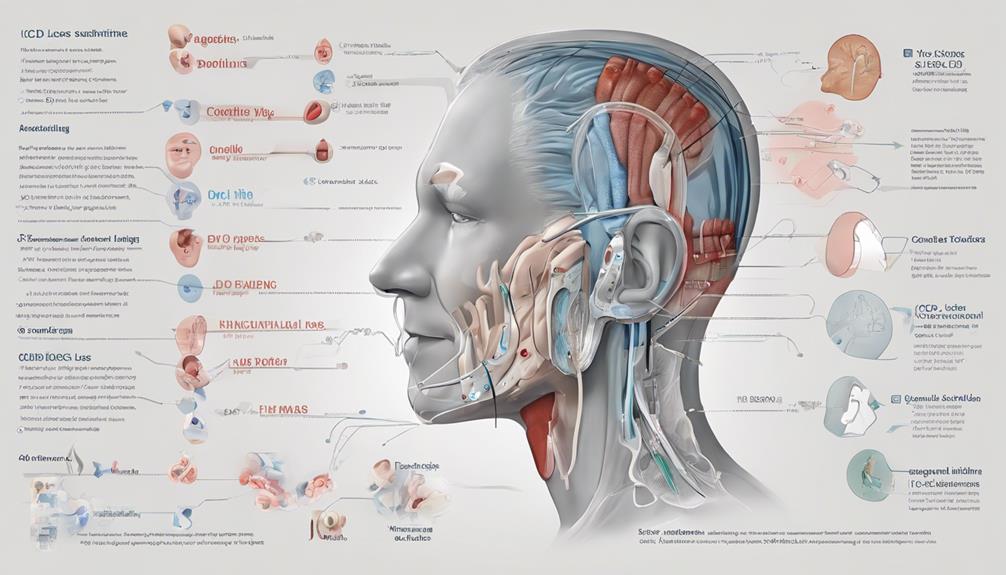
Transitioning from the overview of sensorineural hearing loss coding, our focus now shifts to the precise ICD-10 coding guidelines applicable to this condition. When assigning ICD-10 code H90.3 for sensorineural hearing loss in both ears, it's crucial to adhere to specific character notes and guidelines to ensure accurate coding of bilateral sensorineural hearing loss.
Additionally, being mindful of Excludes 1 notes is essential to prevent coding errors with other types of hearing loss conditions. Chapter-specific guidelines offer valuable insights into coding sensorineural hearing loss in ICD-10, providing further clarity on proper coding practices.
Utilizing ICD-9-CM Crosswalks can also aid in the transition from previous code sets to ICD-10 for hearing loss, facilitating a seamless coding process. By following these guidelines diligently, healthcare professionals can accurately code and document cases of sensorineural hearing loss, contributing to improved patient care and outcomes.
Specific Codes for Sensorineural Hearing Loss
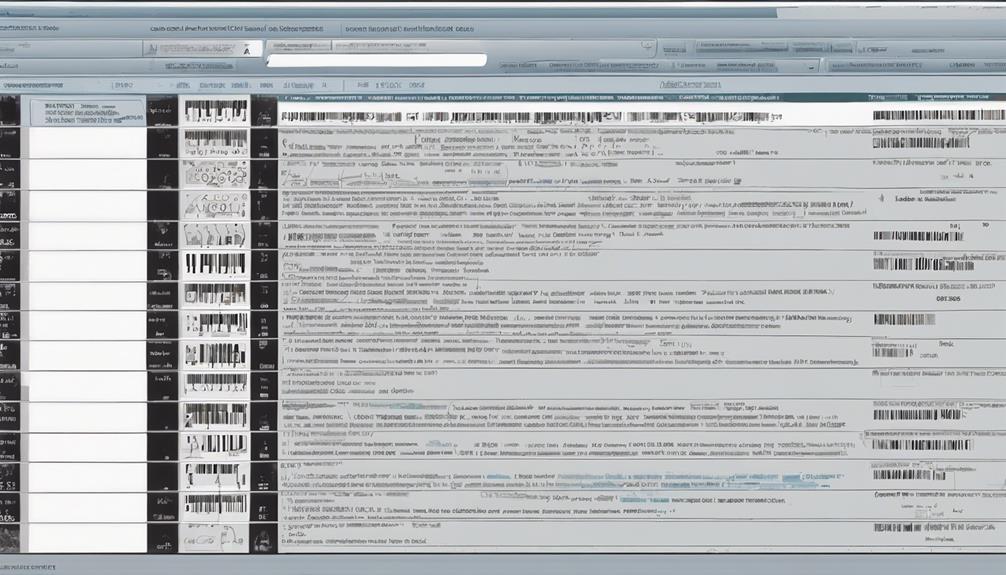
In coding sensorineural hearing loss in ICD-10, the specific code H90.3 denotes bilateral sensorineural hearing loss. H90.3 is categorized under Diseases of the ear and mastoid process in the ICD-10 coding system.
Accurate code assignment is crucial to reflect the patient's diagnosis of bilateral sensorineural hearing loss. It's important to be aware of the Excludes1 notes associated with H90.3, which provide guidance on conditions not to be included under this specific code. Understanding the official long descriptor and coding guidelines for H90.3 is essential for proper diagnosis coding.
Documentation Tips for Accurate Coding
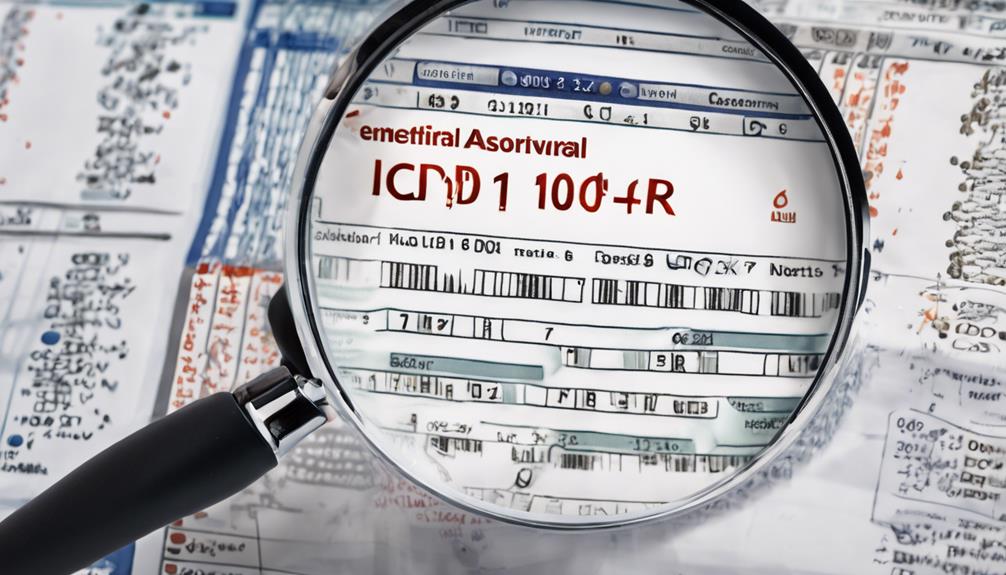
For accurate coding of sensorineural hearing loss, our documentation must include specific details such as the ICD-10 code H90.3, the bilateral nature of the hearing loss, relevant diagnostic information, any known causes, and clear, consistent language. Including these elements ensures precise classification and billing for patient care.
Thorough Descriptions: Detailed descriptions of symptoms and diagnostic findings help paint a comprehensive picture for accurate coding.
Timely Updates: Regularly updating patient records with new testing results and diagnostic information is crucial for staying current and providing quality care.
Collaborative Approach: Engaging with healthcare providers across disciplines fosters a holistic view of the patient's condition, aiding in identifying potential causes or contributing factors to the hearing loss.
Importance of Proper Coding for Patient Care
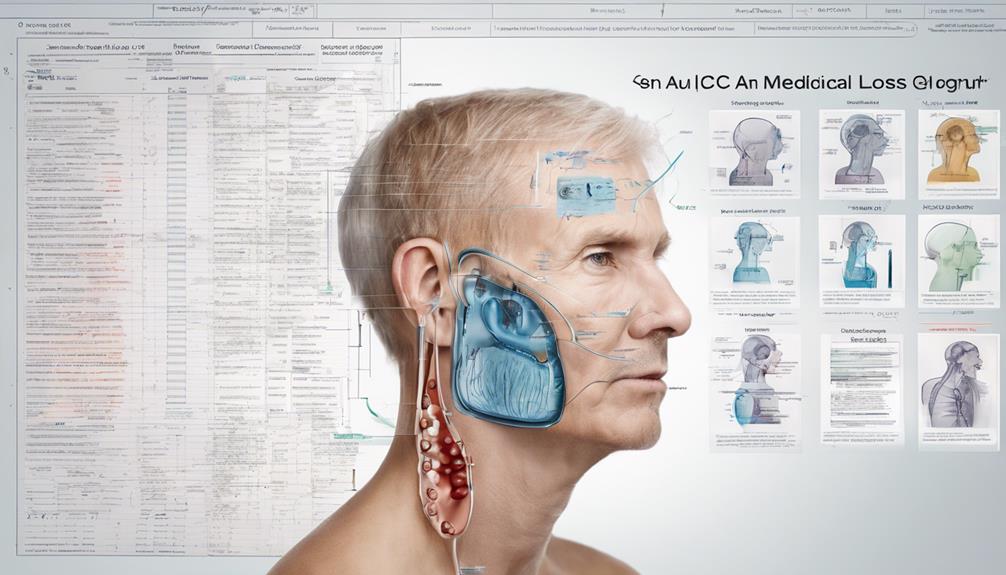
Proper coding for sensorineural hearing loss in ICD-10 is crucial for ensuring accurate documentation of the patient's condition. Accurate coding plays a vital role in planning appropriate treatment strategies for managing sensorineural hearing loss effectively. By using the correct ICD-10 code, healthcare providers can track the progression of the condition over time, allowing for adjustments in treatment as needed. Moreover, having the accurate code is essential for insurance reimbursement and claims processing, ensuring that the healthcare facility receives proper compensation for the services provided to the patient.
Furthermore, proper coding fosters better communication among the healthcare team members regarding the patient's hearing health. This clear communication enhances the quality of care delivered to individuals with sensorineural hearing loss, leading to improved outcomes and patient satisfaction. Therefore, meticulous attention to proper coding practices is fundamental in providing comprehensive care and support for individuals dealing with sensorineural hearing loss.
Frequently Asked Questions
What Is the ICD-10 Code for Sensorineural Hearing Loss?
We know the ICD-10 code for sensorineural hearing loss is H90.3. It signifies bilateral sensorineural hearing loss and falls under Diseases of the ear and mastoid process.
This type of hearing loss involves damage to the inner ear or auditory nerve. Proper coding is crucial for accurate medical billing and record-keeping.
What Is the ICD-10 Code for Impaired Hearing Loss?
When coding for impaired hearing loss in ICD-10, it's crucial to use the specific code that accurately reflects the type of hearing loss present.
The code for sensorineural hearing loss, H90.3, denotes bilateral sensorineural hearing impairment.
It's essential to differentiate between various types of hearing loss for precise medical billing and effective tracking of patient conditions.
Correct coding ensures proper identification and management of hearing impairments.
What Is the Diagnosis Code for Asymmetric Sensorineural Hearing Loss?
When it comes to asymmetric sensorineural hearing loss, the diagnosis code H90.42 is crucial. This code specifically addresses the condition affecting the left ear, aiding in accurate documentation and billing processes.
Healthcare providers rely on this code to pinpoint sensorineural hearing loss in the left ear for effective treatment planning. Using H90.42 ensures precise classification and tracking of this type of hearing impairment, benefiting both patients and healthcare professionals.
What Is Bilateral Moderate Sensorineural Hearing Loss?
Bilateral moderate sensorineural hearing loss refers to a condition where both ears experience a moderate level of impairment in the inner ear or auditory nerve. This type of hearing loss can impact speech understanding in both ears.
Diagnosis typically involves audiometric testing by an audiologist. Treatment options may include hearing aids, cochlear implants, or auditory rehabilitation programs.
It's essential to address this condition promptly to improve quality of life.
Conclusion
In conclusion, accurate coding for sensorineural hearing loss in ICD-10 is crucial for proper patient care and reimbursement. By following coding guidelines and documenting information accurately, healthcare professionals can ensure accurate claim submission and better patient outcomes.
Remember, coding is the key to unlocking the path towards effective management of sensorineural hearing loss. Just as a well-tuned instrument produces beautiful music, precise coding leads to optimal healthcare delivery.

